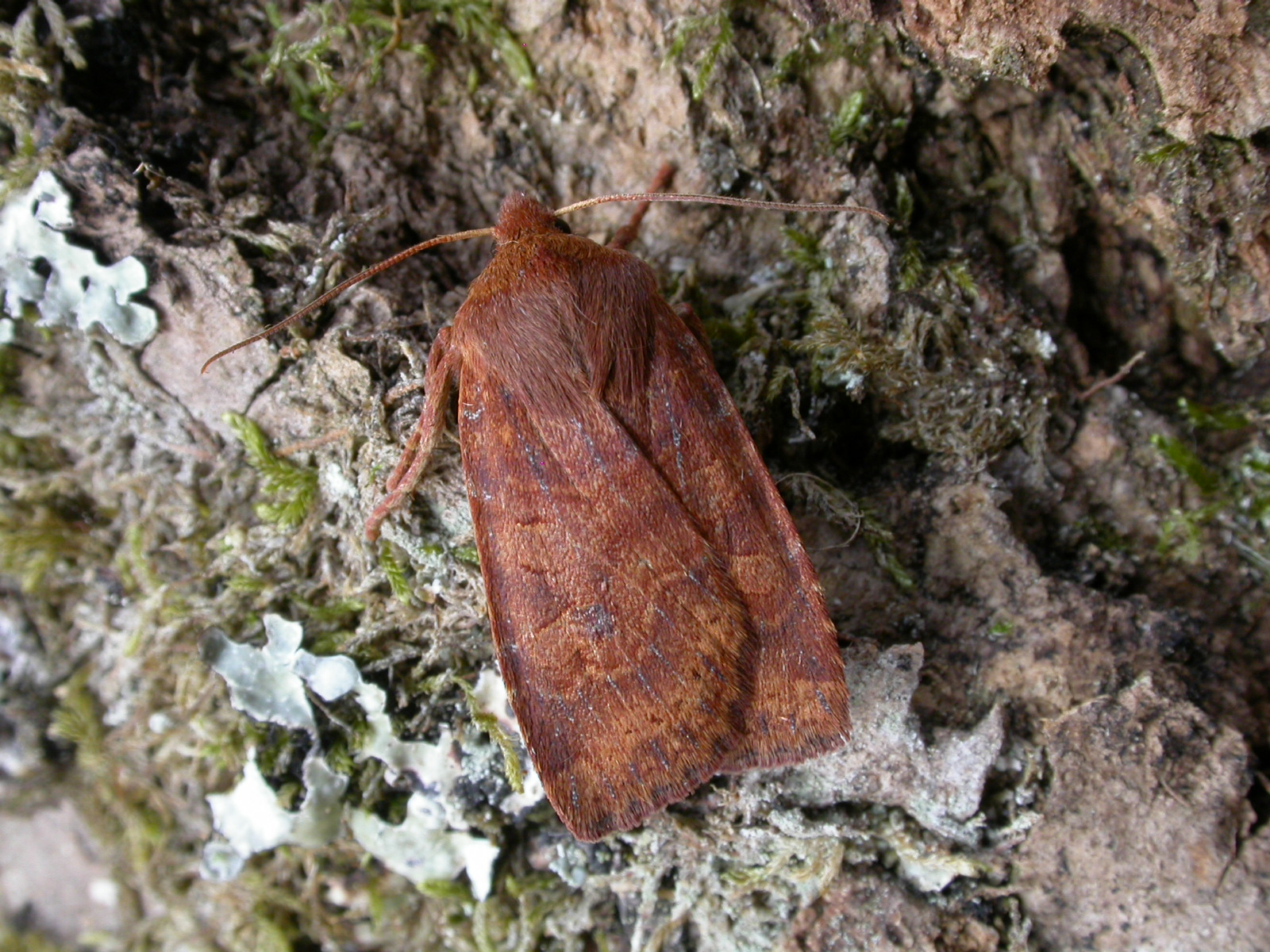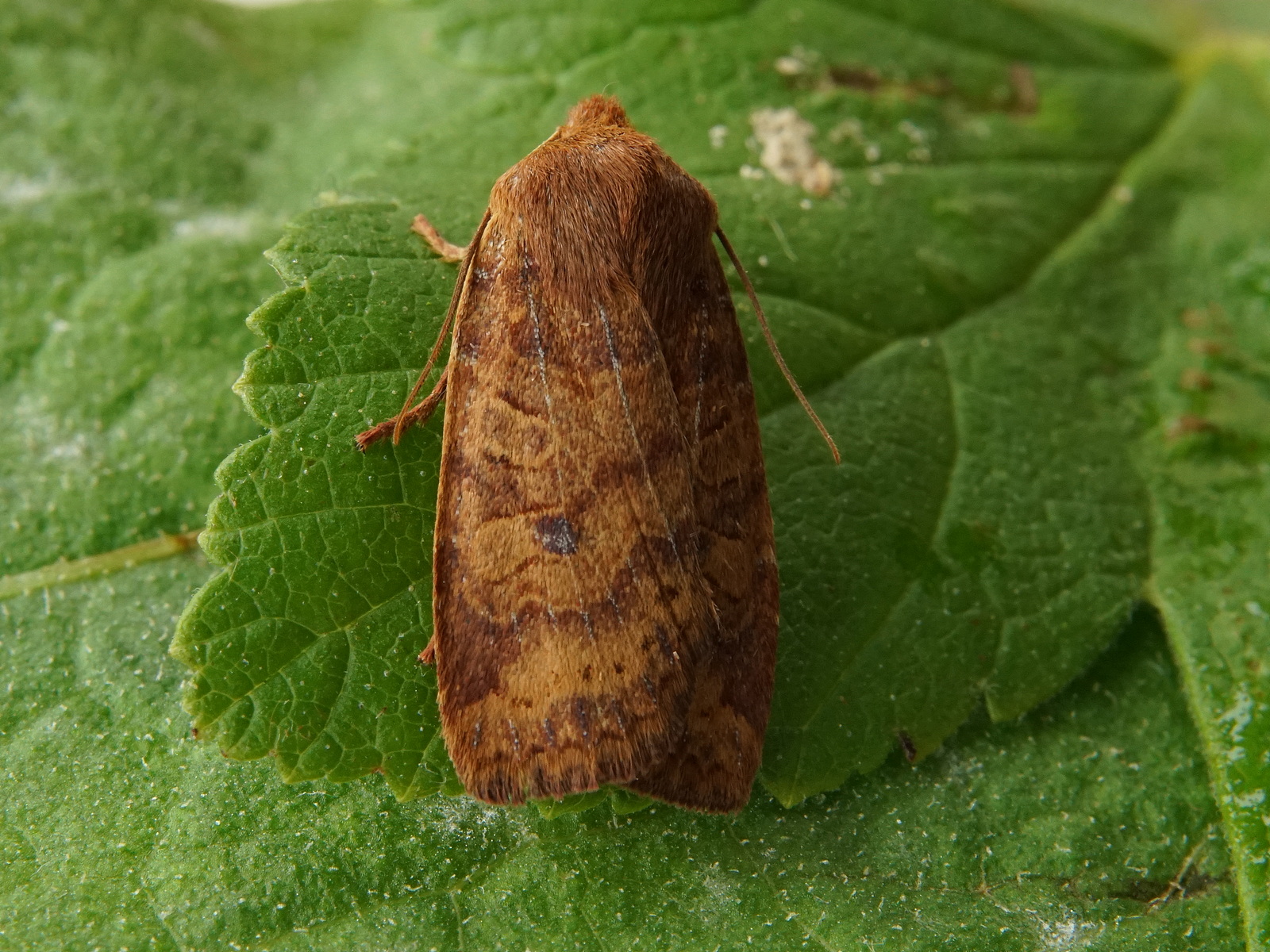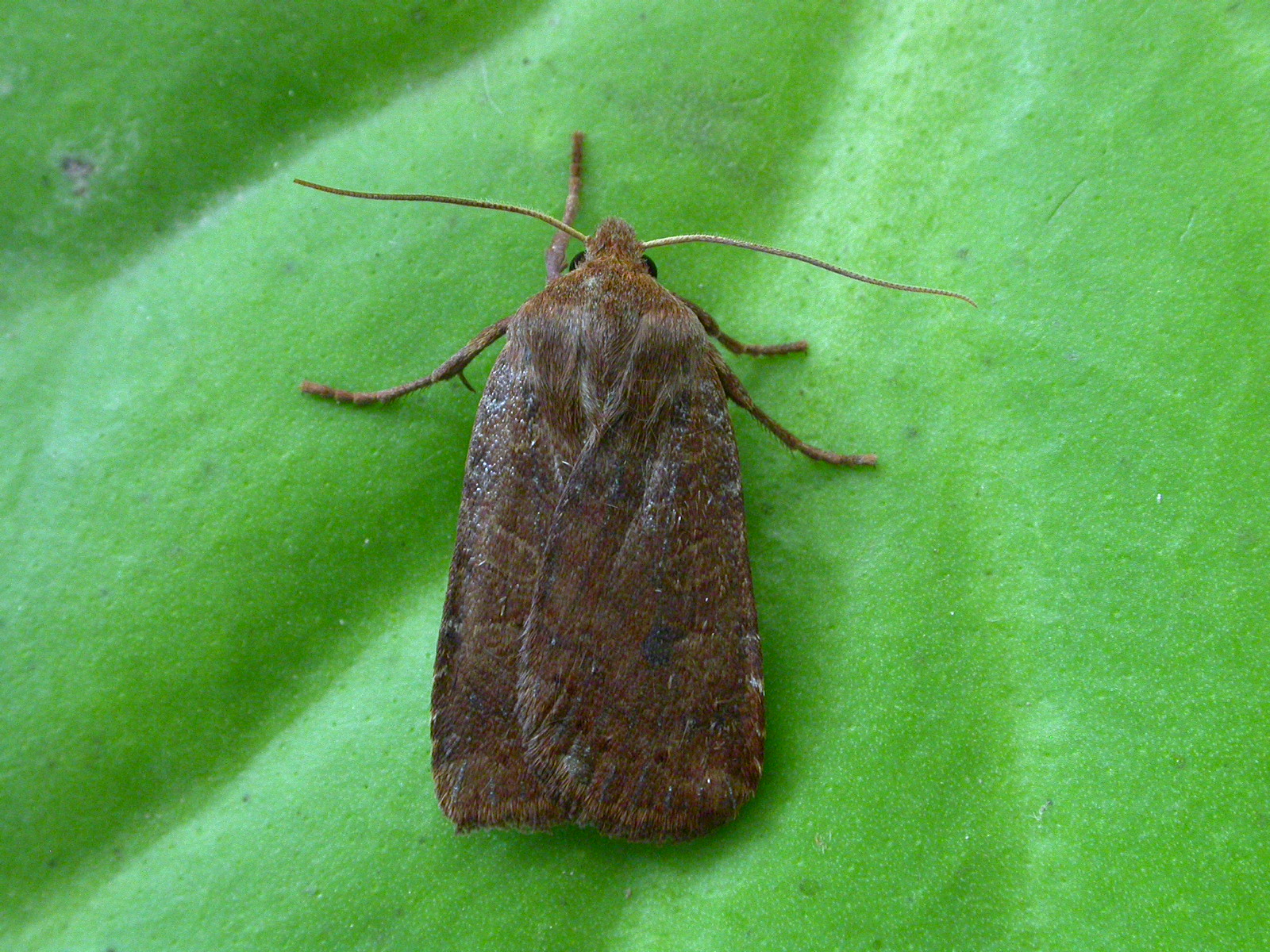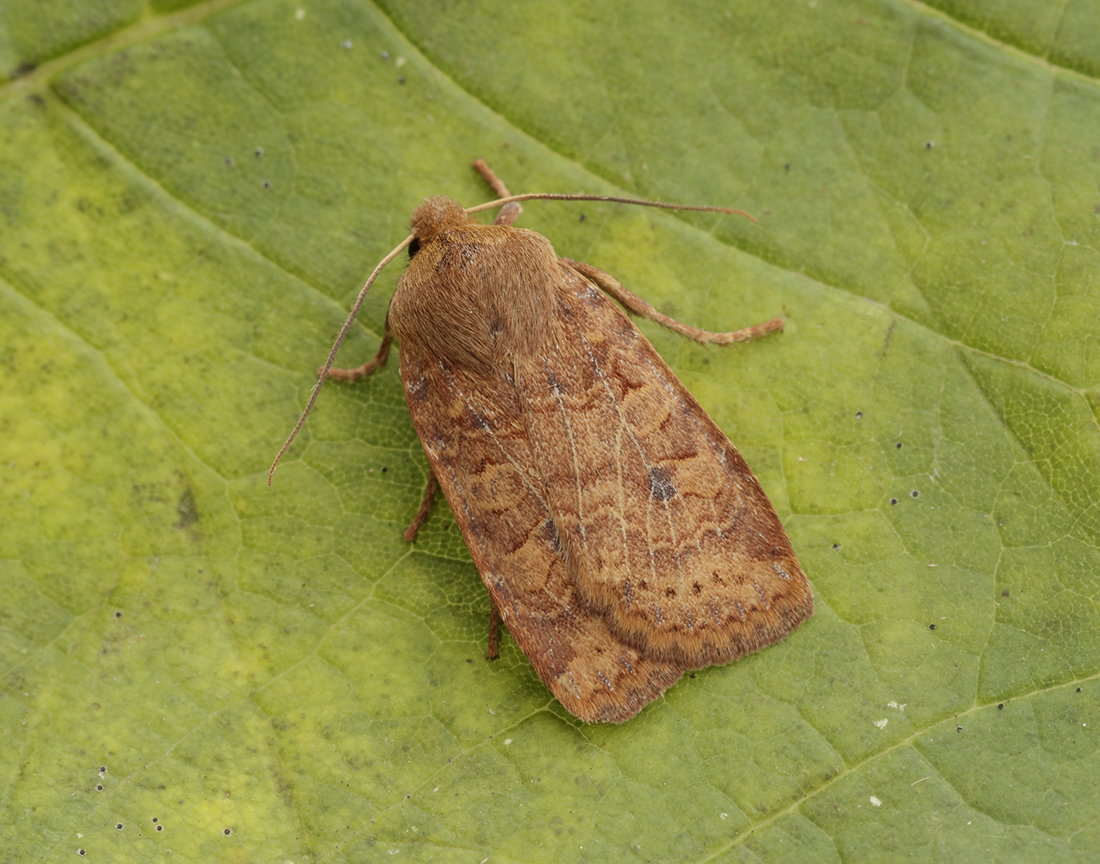Identification
Care required in separating from the rarer Dark Chestnut. Chestnut is generally paler than the confusion species, Dark Chestnut, with a broader forewing and rounded apex.
Recording Method.
Attracted to light, also comes to sugar and flowers.
Life cycle
One generation. Overwinters as an adult, being active when its mild. Larvae are from late April to June. Pupation taking place in an underground cocoon about two months later.
Larval foodplants
Larvae feed on a range of broadleaved trees, as well as docks.
Habitat
Wide range of habitats, usually with trees.
History
Lennon (1863) under Cerastis vaccinnii had stated it to be very common, then under Cerastis spadicea, a synonym, he had found it in the Crichton Institution Garden. Gordon (1913) found The Chestnut very abundant and generally distributed in Wigtownshire. It also came to sugar and appeared variable. Sir Arthur Duncan (1909-84) during his lifetime had found it at Closeburn, Tynron and Castlehill, Dumfries (all VC72).
During 1974-92 there were a lot of records from six of the seven Rothamsted stations, Caerlaverock not recording it. Then from 1992 to 2010 the vast majority of the records came from trapping at Kirkton and Durisdeer (VC72), Cally Woods and Mersehead RSPB (VC73), with scattered records from elsewhere in those two VCs. Just two sites in Wigtownshire during the same period produced a handful of records between them, Glenwhan Gardens at Dunragit and Forest Moor.














